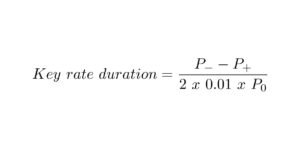What is the Base Line, or Kijun-Sen?
A crucial element of the Ichimoku Kinko Hyo technical analysis technique, sometimes called the Ichimoku cloud, is the Kijun-sen, or baseline.
As a measure of short- to medium-term price momentum, the Kijun-sen is the midpoint price of the previous 26 periods. Together with the other elements of the Ichimoku cloud, the indicator helps evaluate the trend and can help spot trading opportunities.
The Formula for the Kijun-Sen (Base Line)
Kijun-sen (baseline)=½(26-period high+26-period low)
How to Determine the Base Line
- Discover what the highest price was for the last 26 periods.
- Find the lowest price for the previous 26 periods.
- Divide the total by two to get these two values.
What Is the Base Line, or Kijun-Sen, Telling You?
Kijun-sen displays the average price for the last 26 periods when viewed alone. Like with a moving average, when the price is above the baseline, the price has crossed the midpoint, indicating an increase in short-term price momentum. If the angle of the Kijun-sen line is upward, this is further supported.
When the price is below the 26-period midpoint, it indicates that price momentum is to the downside. This is especially true if the Kijun-sen is oriented downward. Although this computation commonly uses 26 periods, it can be changed to fit the individual’s preferences. The price will be more closely tracked over fewer periods—say, fifteen. The price will not follow as closely over more extended periods, like 45.
When determining price direction shifts and producing trading signals, the Kijun-sen is almost typically utilized with the Tenkan-sen (conversion line). The price midway through the nine periods is known as Tenkan-sen. Being a short-term indicator, it reacts to price fluctuations faster and keeps a closer eye on the price. Tenkan-sen suggests that price momentum is strengthening to the upside when it crosses above Kijun-sen. For specific traders, this is a buy signal. This crossing is positive.
- A price decline is indicated when Tenkan-sen crosses below Kijun-sen; some traders interpret this as a sell signal. The crossover is bearish.
- The price is either moving erratically or without a clear trend when Tenkan-sen and Kijun-sen are entwined or crossing back and forth. In these situations, crossover signals are less dependable.
When assessing the trend or utilizing crossovers, the data should be interpreted in light of the overall Ichimoku cloud signal. For instance, if the price is above the “cloud,” a bearish crossover would probably not be utilized to establish a short position, but it might still be used to sell an extended position.
What’s Different: A Simple Moving Average (SMA) and Kijun-sen (baseline) in between
Midway between the price high and low for the previous 26 periods is the Kijun-sen. This is not the mean. By adding up the closing prices of each period and dividing the result by the total number of periods, one may compute a simple moving average, which is an average price over a predetermined number of periods.
Since they yield different values, the trader will receive distinct information from a 26-period SMA and a 26-period baseline.
Utilizing Kijun-sen (the baseline) has its drawbacks.
The price and the Kijun-sen will frequently trade close to each other unless a significant recent price movement forces the price to move away from the 26-period midpoint. This makes it a poor tool for assisting with trend direction at such times. If the price consistently crosses the baseline, further information about the broader or longer-term trend direction must be obtained from the other Ichimoku indications.
Specific crossover indications with the Tenkan-sen may or may not cause significant and beneficial price movements. A false signal may be produced if the price does not move as anticipated or if the indicator crosses back in the other direction.
The Kijun-sen is best utilized in conjunction with the other Ichimoku indications; however, it also offers some information on its own. Traders are also urged to employ fundamental analysis, other technical tools, and price action analysis.
Conclusion
- You can also say “baseline” for kijun-sen, the middle point of the 26-period high and low.
- When the Kijun-sen and Tenkan-sen (conversion line) coincide, the 9-period average price sends trade signals.
- It is expected to use Kijun-sen along with the other Ichimoku signs.
- If the price is above Kijun-sen, prices will increase in the short to middle term. If the price is below the Kijun-sen, the price is going down.















































